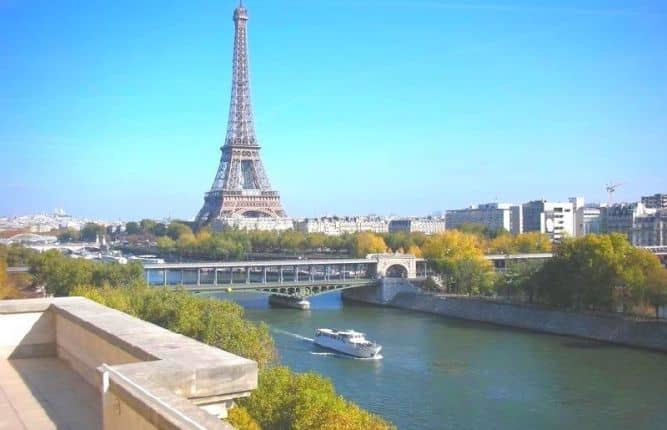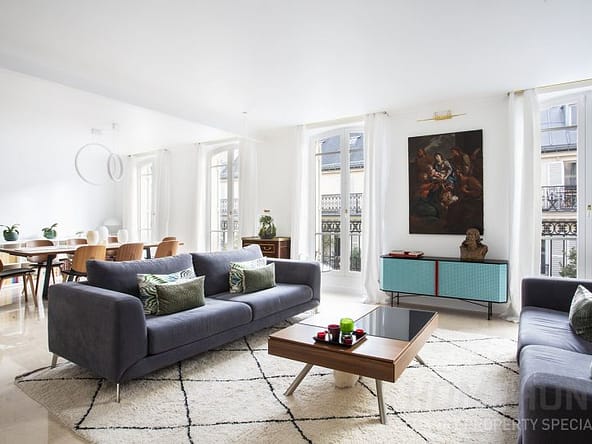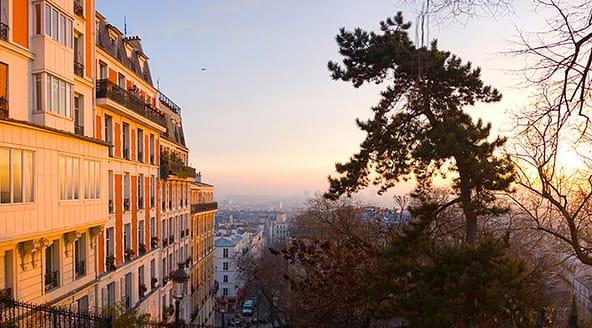Paris has so many different types of neighborhoods or arrondissements to choose from, each with its own character and distinctive set of qualities. For those looking to invest in this wonderful city is can be difficult to know where to live in Paris. If you’re looking to buy property in Paris then it’ll be helpful to know what to expect from each arrondissement as you go about your hunt for a new house or apartment in Paris.
Table of Contents
What are the arrondissements?
Paris’ arrondissements, or neighborhoods, start at the centre of the city. From there, they continue in a spiral from the 1st to the 20th. Because of the winding layout, some low number arrondissements will be situated next to high number arrondissements. For example, the 2nd is between the 1st and the 3rd, but it’s also close to the 9th. Sometimes arrondissements are referred to by name (such as Louvre for the 1st), but more often they’re referred to by number.
1st and 2nd arrondissements
At the centre of the city are the 1st and 2nd arrondissements. The area is the most popular in Paris and apartments are always in high demand. Visit world-famous tourist attractions, historic monuments and art museums during the day. For fantastic shopping, the Champs-Élysées is nearby. To relax, head to the Jardin des Tuileries, which is located by the Seine.
3rd and 4th arrondissements
The 3rd and 4th arrondissements are residential and rooted in the medieval period. Local recreation includes museums, theatres and shopping in designer boutiques. There aren’t as many green areas here as in the 1st and 2nd, but there is a manmade sandy beach that pops up every summer.
5th arrondissements
Referred to as the Latin Quarter, the 5th is where the Sorbonne is located, along with a host of other academic institutions. There’s an eclectic selection of restaurants, bars and shops, including a lot of independent stores. Visit the Jardin des Plantes for some greenery.
6th arrondissements
Several old, beautiful buildings have been turned into apartments in the 6th. Run or cycle at the Jardin du Luxembourg and shop at independent food stores or designer boutiques. Though the 6th is located close to the center of the city, it’s quiet and pleasant.
7th arrondissements
Traditional and residential, many apartments in the 7th have Eiffel Tower views. Nearby are the Palais Bourbon and the Musée d’Orsay. Shop at small, independent stores – there’s no shortage of charming bakeries and cheese shops. Bring the kids to the park at Les Invalides.
8th arrondissements
This area is elegant and attracts the elite. The Champs-Élysées is buzzing around-the-clock with bars, clubs and restaurants that never close. If you want to escape the energy, the other streets in the neighborhood are much quieter. Relax and take in nature at Parc Monceau.
9th arrondissements
Most of the residential buildings in the 9th date back to the 19th century. Though primarily a business sector, the area around the Moulin Rouge is known for being bold and racy. There’s fantastic access to both the centre of the city and the nightlife scene in Pigalle. Don’t miss shopping for designer labels at Galeries Lafayette. There are also a few small parks scattered about to give you some time off from the urban setting.
10th and 11th arrondissements
The 10th and 11th arrondissements are mainly residential. Multi-cultural and artistic, you’ll notice a broad variety of languages and cuisines. Visit the Oberkampf area for nightlife.
12th arrondissements
You’ll find a lot of families in the residential 12th arrondissement. Watch live sports at the indoor arena, which also has a skate park. Cyclists can spend their time on the Promenade Plantée. Get some alone time in the gorgeous Bois de Vincennes raised park.
13th arrondissements
Mostly residential, the 13th also includes Paris’ Chinatown. There are brand new high-rise apartment buildings as well as 19th-century townhouses. This is a particularly great area for outdoor lovers and you can spend a hot day in the floating pool on the Seine. With several sports clubs nearby, you can join all sorts of classes, including yoga.
14th and 15th arrondissements
Mainly a residential area, there are both new towers and older buildings throughout the 14th and 15th. Since this is where trains from Brittany come in, there are a lot of Breton restaurants in the area. There are several small parks here, including one on top of the Gare de L’Est train station.
16th arrondissements
The 16th has a large expat community. Property includes new apartments with views of the Seine and townhouses from the 17th century. Streets are lined with cafes and restaurants and the whole neighborhood is peaceful and calm. Head to the Bois de Boulogne on a sunny afternoon.
17th arrondissements
Apartments in the 17th are larger than those at the centre of Paris, making them particularly good for families. There are a lot of cinemas and restaurants in the area, plus several small parks.
18th arrondissements
There’s a distinct village feel to the 18th arrondissement. Visit Sacré-Coeur, lively Pigalle in the south or the cinemas and dining of the northern section. For the most part, the 18th is quiet, located on a hill the leads away from the heart of Paris.
19th and 20th arrondissements
Apartments in the 19th and 20th arrondissements are more modern and larger than ones closer to the center of Paris. There’s a lot of street life as well as nightlife here, with bars and nightclubs that stay open extra late. Try different international foods from the various small shops in the area. Visit the Père Lachaise Cemetery, which has lovely tree-lined pathways.
The Left and Right Banks of the Seine
Aside from Paris being divided by arrondissements, there’s also the division that’s made by the Seine. The left bank is referred to as rive gauche and the right bank is referred to as rive droite. The rive gauche section takes in everything to the south of the Seine, while the rive droite section takes in everything to the north. This divides the city almost perfectly in half. Most people think of the rive gauche as the artsy and bohemian part of Paris, while the rive droite is more sophisticated and chic.




